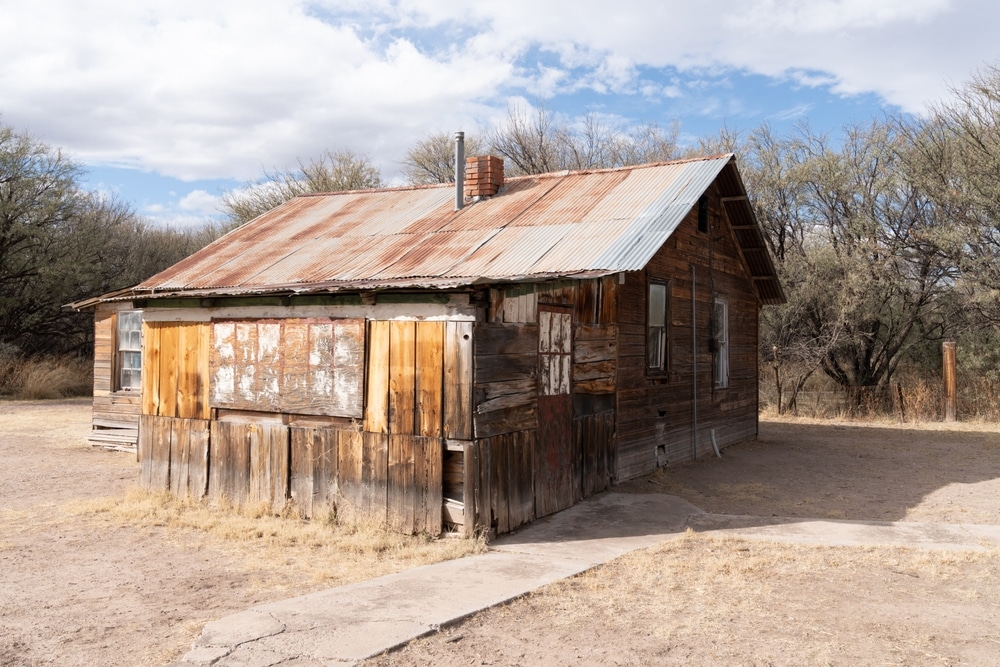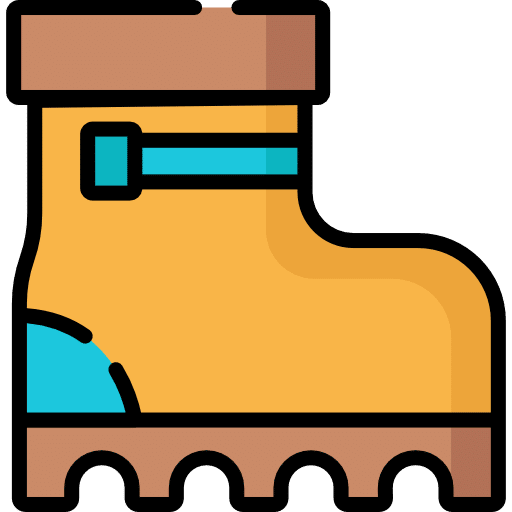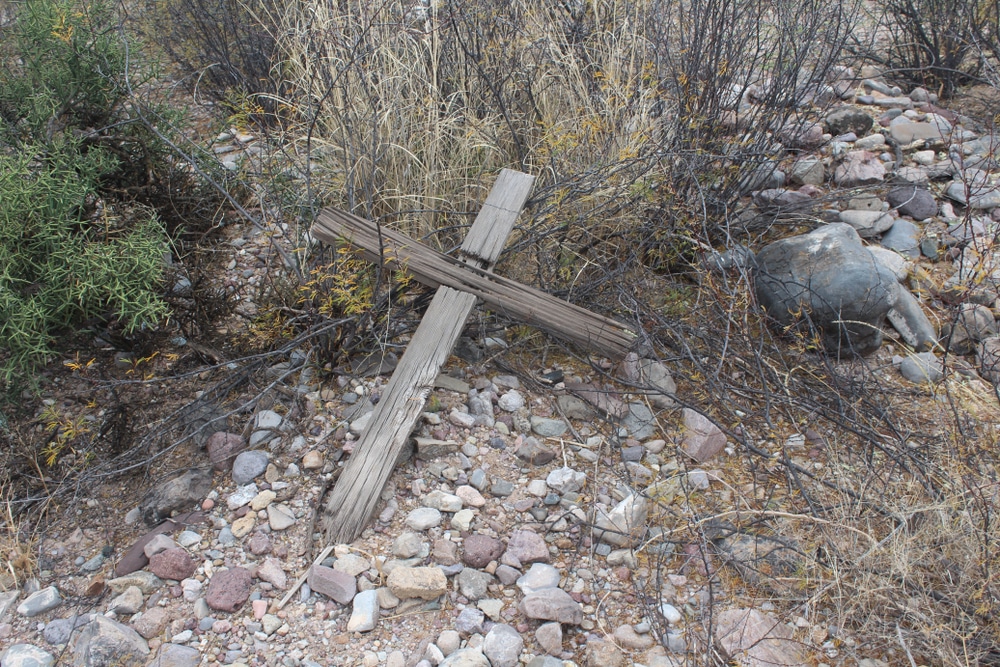Along the banks of the San Pedro River, where cottonwoods sway in the gentle Arizona breeze, lie the scattered remnants of Fairbank—a place where time seems to have stood still. Today, weathered adobe walls and the stalwart frame of an old schoolhouse are all that remain visible of what was once a vital transportation hub in southeastern Arizona’s Cochise County. As you walk the dusty paths of this forgotten settlement, the whispers of the past invite you to imagine the bustling community that once thrived here, connecting the infamous silver town of Tombstone to the wider world.

The restored buildings of Fairbank offer an immersive walk into the past. Key sites include:
The Fairbank Schoolhouse – Restored and open as a visitor center and museum with exhibits on the town’s history and local wildlife.
The Commercial Building Ruins – Remnants of the original mercantile that served the bustling rail town.
The Jail and Residences – Foundations and structures show how residents once lived and worked in this once-lively outpost.
Interpretive signs throughout the townsite make it easy to explore on your own and understand the historical context.
Perched on a ridge with panoramic views, the Fairbank Cemetery is a quiet, moving stop that tells the human side of this once-booming rail town. Many markers are weathered or anonymous, reflecting the hardships of frontier life.

This 1.5-mile trail loops through the historic town and out into the surrounding desert landscape. Along the way, you’ll pass the cemetery on the hill, offering views of the San Pedro River and graves of early settlers, some dating back to the 1880s. The trail is easy to moderate and suitable for most visitors.

For those looking for a longer adventure, a 4-mile roundtrip hike from Fairbank leads to the Millville Ruins, a 19th-century silver ore processing site that once served Tombstone’s mines. Continue farther to reach the Boquillas Land Grant boundary wall, built by Spanish colonists in the 1700s. Along the San Pedro River, you’ll also pass cottonwood groves and opportunities for wildlife spotting.

There are shaded picnic areas with tables and restrooms near the trailhead and visitor center. It’s a serene place to enjoy lunch surrounded by natural beauty and historic ambiance.

Fairbank is situated in one of the best birding regions in the Southwest. The San Pedro River corridor is home to:
Over 350 species of birds
Seasonal migrations (especially spring and fall)
Riparian habitats ideal for spotting hawks, hummingbirds, warblers, and more
Bring binoculars and a field guide for a rewarding nature walk.

Just 10 miles away, Tombstone complements your Fairbank visit with its more lively historic reenactments, museums, and saloons. Visiting both in a single day offers a full picture of Arizona’s Wild West past—from bustling town to railroad outpost to industrial ruins.

Fairbank’s combination of old adobe ruins, open desert, cottonwood trees, and distant mountains makes it a fantastic location for photographers, painters, and sketch artists. Sunrises and sunsets can be especially dramatic in the area.
Among those buried in Fairbank Cemetery are members of the Herrera family, who operated a small general store and served as a link between the Anglo and Mexican communities. Their business records, preserved in archives, reveal the diverse merchandise that sustained frontier life: everything from canned goods and bolts of cloth to mining supplies and patent medicines.
Another notable grave belongs to Thomas Brooks, a railroad engineer killed in a devastating boiler explosion in 1895. Newspaper accounts described how the community rallied to support his widow and three children, demonstrating the bonds of solidarity that united this small settlement in times of tragedy.
The cemetery also contains the grave of Elizabeth Morgan, the town’s schoolteacher from 1891 to 1898, whose detailed letters to her family in Ohio provide vivid descriptions of life in Fairbank. She wrote of the challenges of educating children of different ages and backgrounds in a one-room schoolhouse, the community events that punctuated the monotony of desert life, and her observations of the changing landscape as ranching and agriculture transformed the San Pedro Valley.

| Category | Details |
|---|---|
| Name | Fairbank, Arizona |
| Type | Ghost town (partially preserved and interpreted) |
| County | Cochise County |
| Founded | 1881 |
| Status | Abandoned; preserved as part of a historic district within BLM land |
| Population (Historic) | ~100–500 during peak years |
| Population (Current) | None |
| Historical Significance | Served as the railroad and commercial hub for Tombstone‘s silver boom |
| Named After | Nathaniel K. Fairbank, Chicago businessman and investor in Tombstone |
| Primary Industries | Rail freight, cattle shipping, milling, and mining support |
| Post Office | Operated from 1883 to 1972 |
| Decline Factors | Decline of Tombstone mines, flooding, and railroad shifts |
| Remnants Today | Schoolhouse (restored), mercantile ruins, cemetery, house foundations |
| Preservation Status | Part of the San Pedro Riparian National Conservation Area (BLM managed) |
| Access | Easy access via AZ State Route 82, west of Tombstone |
| Geographic Setting | Along the San Pedro River, scenic and ecologically rich corridor |
| Elevation | Approx. 3,900 feet (1,189 meters) |
| Climate | High desert – warm days, cool nights |
| Best For | History buffs, hikers, photographers, birdwatchers, Tombstone visitors |
| Managed By | Bureau of Land Management (BLM) |
Unlike many of Arizona’s ghost towns that boomed with the discovery of precious metals, Fairbank found its purpose as a crucial railroad junction and supply center. Established in the early 1880s, the town was named after Nathaniel Fairbank, a Chicago merchant who helped finance the Tombstone mining operations. Its strategic location on the San Pedro River made it an ideal transportation nexus when the railroad arrived.
While Fairbank may never have experienced the wild excesses of nearby Tombstone, it served a critical function in the region’s development. With only about 100 inhabitants at its peak in the 1880s, Fairbank survived primarily as a rest stop between Tombstone and the rest of Arizona. This modest community played an outsized role in the territory’s economic life, facilitating the movement of silver, supplies, mail, and passengers throughout southeastern Arizona.
Today’s visitors to Fairbank encounter a quiet collection of preserved structures managed by the Bureau of Land Management as part of the San Pedro Riparian National Conservation Area. The most prominent building is the two-story schoolhouse, constructed in 1920, which now serves as a visitor center. Nearby stands the reconstructed Fairbank Commercial Company building, once the town’s general store and post office. The foundations of the railroad station, several adobe homes, and a stable offer further glimpses into daily life in this frontier community.
The town’s layout reveals its purpose-built nature, with structures arranged conveniently near the railroad tracks that once brought life and commerce to this desert outpost. Unlike mining towns that often developed haphazardly, Fairbank’s organization reflects its identity as a planned transportation center.
Located near the San Pedro River in Cochise County, the Fairbank Cemetery is associated with the ghost town of Fairbank. Set on a gentle rise overlooking the former settlement, this small burial ground contains graves dating from the 1880s through the early 1900s. Weathered markers, some little more than rough stone, others more elaborate Victorian monuments, tell the stories of those who lived and died in this frontier outpost.
The cemetery reflects the hardships of frontier life. Numerous small graves mark the final resting places of children who succumbed to diseases that swept through the community. Others commemorate railroad workers killed in accidents, elderly pioneers who survived the dangerous journey west only to face the harsh realities of desert life, and occasional victims of frontier violence.
Despite its modest size, the Fairbank Cemetery offers a poignant window into the community’s demographic makeup. The graves represent a cross-section of frontier society: railroad employees, merchants, ranchers, and their families. Some markers bear Spanish surnames, reflecting the area’s proximity to Mexico and its bicultural heritage.
While Fairbank never grew large enough to develop separate pioneer and community cemeteries like some of Arizona’s more substantial towns, its burial ground served all segments of the population. The modest nature of most grave markers reflects the practical, working-class character of the community.
In death as in life, Fairbank’s residents remained connected to the railroad that was the town’s reason for being. Many graves belong to families whose livelihoods depended on the Southern Pacific and Arizona & New Mexico railroads. Their final resting places overlook the tracks that brought them to this remote corner of the territory.
Although Fairbank itself was too small to support its own newspaper, the community featured prominently in the pages of the Tombstone Epitaph and other regional publications. These papers reported on train arrivals and departures, shipments of goods, notable visitors passing through, and occasional incidents like robberies or accidents.
The train robberies near Fairbank, particularly the attempted hold-up of February 15, 1900, that ended with the death of notorious outlaw “Three-Fingered Jack” Dunlap and the wounding of lawman Jeff Milton, received extensive coverage. Such events temporarily thrust the quiet transportation hub into the spotlight of territorial news.
Through newspaper accounts, we can reconstruct aspects of daily life in Fairbank: the arrival of mail, the opening and closing of businesses, community celebrations on holidays, and the gradual decline as newer transportation routes bypassed the town.
The railroad was Fairbank’s lifeblood and primary reason for existence. Initially served by the New Mexico & Arizona Railroad (later acquired by the Southern Pacific), Fairbank gained importance when the railroad line connected Benson to the border town of Nogales in 1882. A second line, the Arizona & South Eastern Railroad (later the El Paso & Southwestern), linked Fairbank to Bisbee in 1889, further cementing the town’s status as a transportation hub.
The town’s railroad station was a simple wooden structure that served both lines, with a telegraph office, waiting room, and loading platform. Nearby stood water towers to service the steam locomotives and a small maintenance facility. The convergence of these rail lines made Fairbank a natural transfer point for passengers and freight moving between Tombstone, Bisbee, Tucson, and points beyond.
Passenger trains arrived and departed several times daily during the town’s height, carrying miners, merchants, tourists, and government officials. Freight service was even more crucial, transporting silver from Tombstone’s mines, copper from Bisbee, cattle from nearby ranches, and supplies for communities throughout southeastern Arizona.
Fairbank’s decline began gradually in the early 1900s as the silver mines of Tombstone exhausted their richest ores and new transportation routes diminished the town’s importance as a junction. The creation of Highway 80 in the 1920s, which bypassed Fairbank in favor of a more direct route between Benson and Tombstone, further isolated the community.
The Great Depression delivered another blow, reducing railroad traffic and forcing many residents to seek opportunities elsewhere. By the late 1930s, many buildings stood empty. The post office closed in 1944, signaling the official end of Fairbank as a functioning community, though a few hardy residents remained into the 1950s.
Train service gradually diminished until it ceased entirely when the Southern Pacific abandoned the line in the 1960s and removed the tracks. Without its railroad lifeline, Fairbank could no longer justify its existence.
Today, Fairbank offers visitors a unique window into Arizona’s transportation history. Unlike mining ghost towns that tell stories of boom and bust, Fairbank represents the vital infrastructure that connected isolated communities and made settlement possible in the arid Southwest.
The site has been the subject of archaeological studies that have revealed details about consumer patterns, building techniques, and daily life in a railroad town. Items recovered include merchandise shipping crates, railroad spikes and tools, household goods, and personal items lost or discarded by residents and travelers passing through.
The Bureau of Land Management has recognized Fairbank’s historical significance by preserving and interpreting the site as part of the San Pedro Riparian National Conservation Area. The restored schoolhouse serves as both a visitor center and a museum, displaying artifacts and photographs that illuminate the town’s past.
The Fairbank Cemetery has faced the challenges common to many ghost town burial grounds: erosion, vandalism, and the natural deterioration of markers exposed to harsh desert conditions. Conservation efforts have focused on documenting existing graves, stabilizing markers, and controlling vegetation that might damage the site.
Local historical societies and descendants of Fairbank residents occasionally hold memorial events at the cemetery, maintaining connections to this piece of Arizona history. These gatherings help ensure that the stories of Fairbank’s pioneers are not forgotten as the physical evidence of their lives continues to fade.
Visitors to Fairbank today can explore the ghost town site easily, as it is maintained as a public historic area with interpretive signs and a short walking tour. The cemetery, however, requires more careful and respectful visitation. Though accessible via a marked trail, it remains a sacred space deserving of reverence.
The Bureau of Land Management asks visitors to observe these guidelines:
As the sun sets over the San Pedro Valley, casting long shadows from the remaining walls and foundations of Fairbank, one can almost hear the distant whistle of a steam locomotive and imagine the bustle of passengers and freight being transferred between trains bound for Tombstone, Bisbee, or Tucson. In this quiet place, where the cemetery bears silent witness to lives lived on the frontier, we find a compelling reminder of how transportation infrastructure shaped Arizona’s development.
Fairbank may never have grown beyond a small way station, but its role in connecting people, goods, and ideas made it an essential link in the chain of communities that eventually formed modern Arizona. As we walk among the graves of railroad workers, merchants, and their families, we honor not just their individual stories but their collective contribution to building the connected world we inhabit today.
In the end, Fairbank reminds us that even the smallest places can serve vital functions, and that infrastructure—the railroads, telegraph lines, and way stations that connected isolated settlements—was just as important to Arizona’s development as the more celebrated mines, ranches, and military posts that often dominate frontier narratives.
We use cookies to improve your experience on our site. By using our site, you consent to cookies.
Manage your cookie preferences below:
Essential cookies enable basic functions and are necessary for the proper function of the website.
Statistics cookies collect information anonymously. This information helps us understand how visitors use our website.
Marketing cookies are used to follow visitors to websites. The intention is to show ads that are relevant and engaging to the individual user.